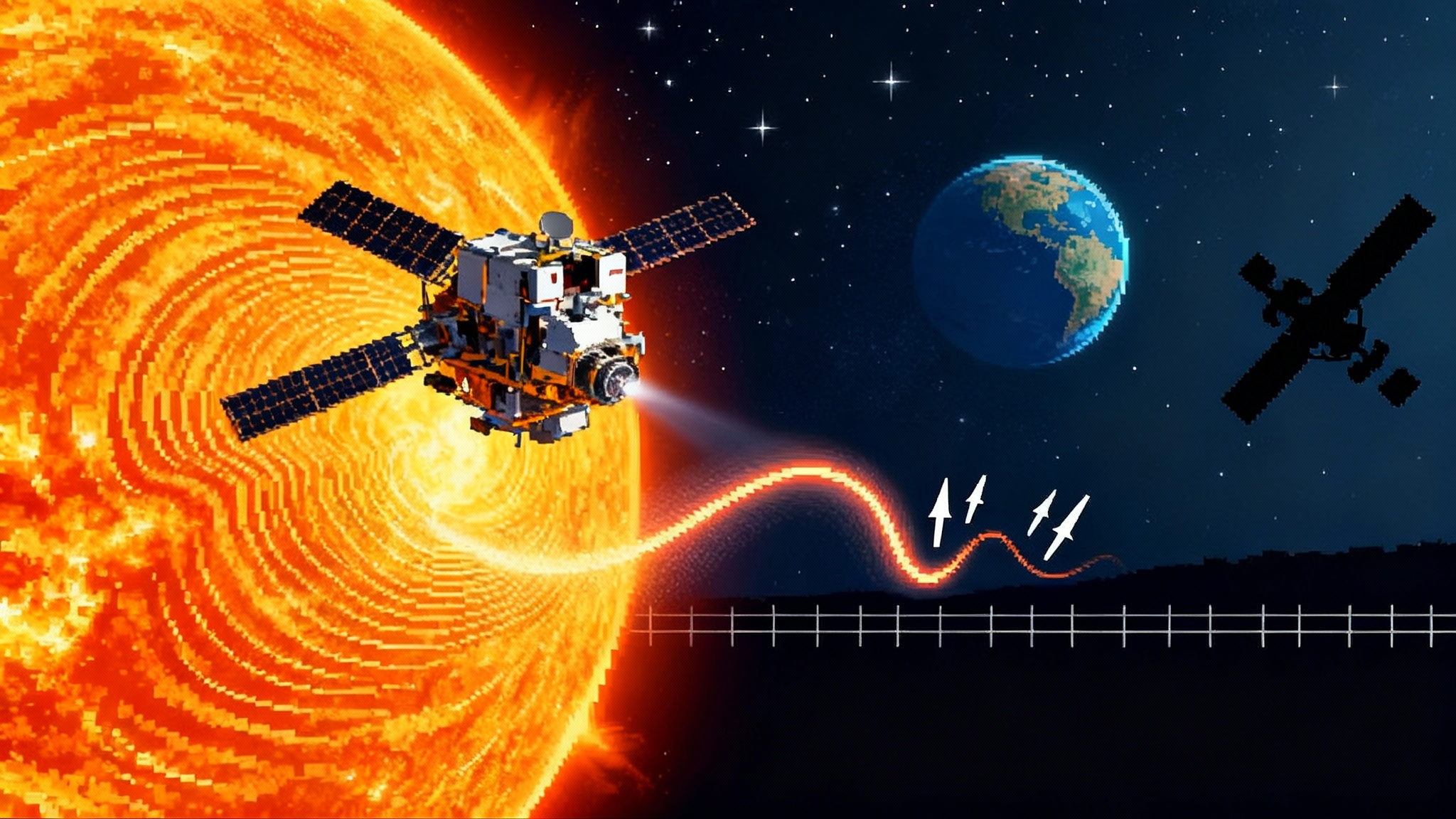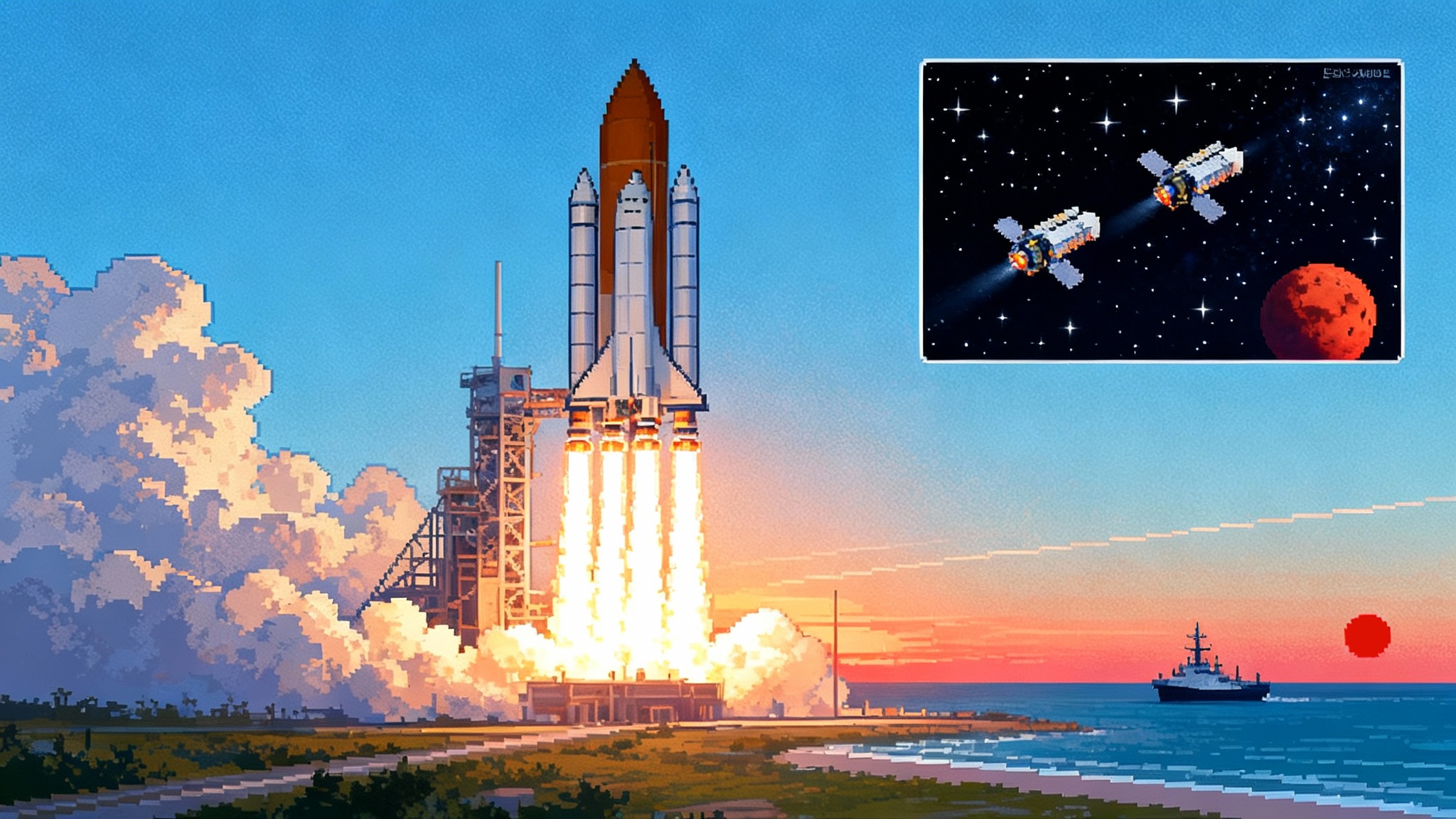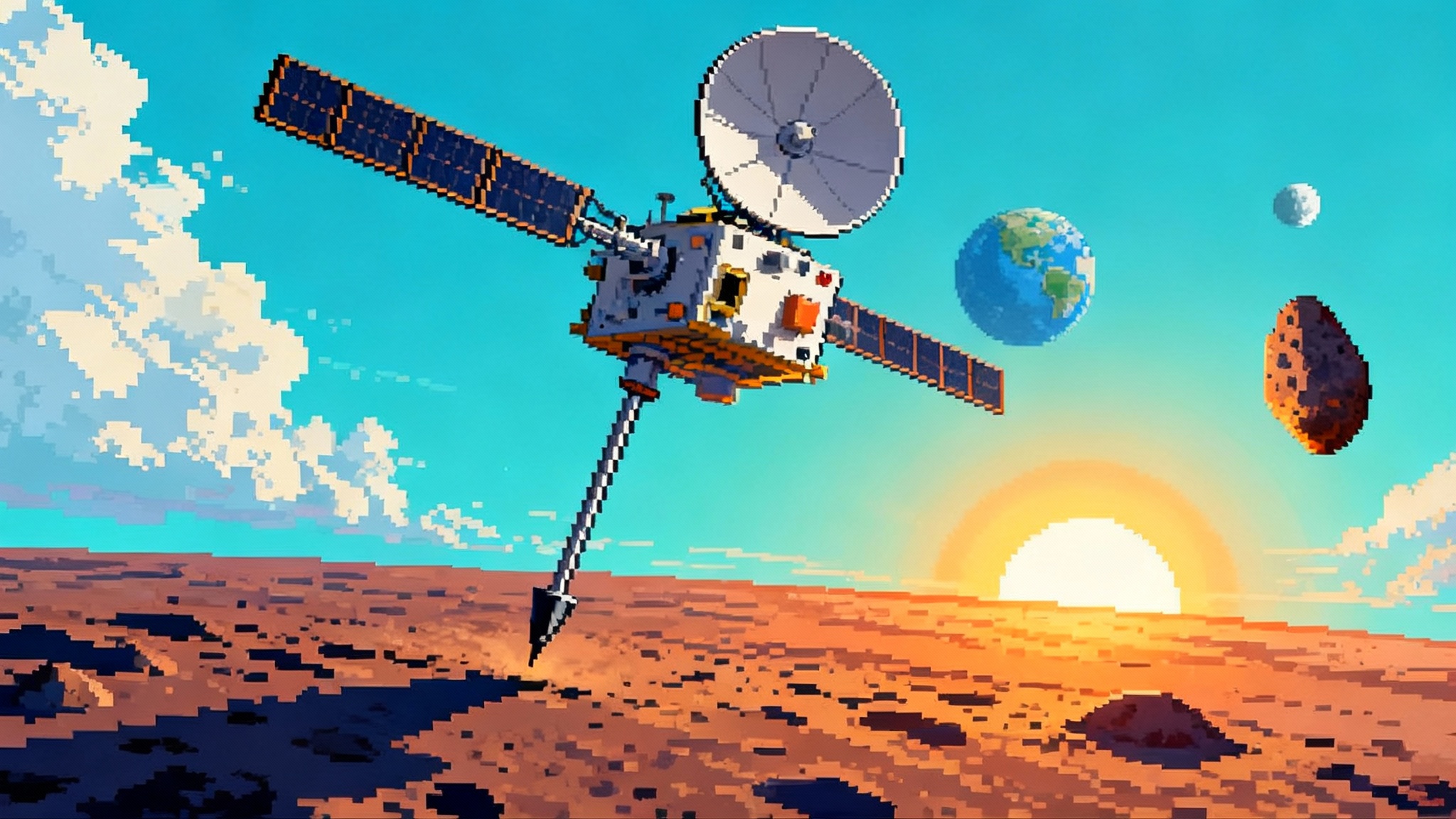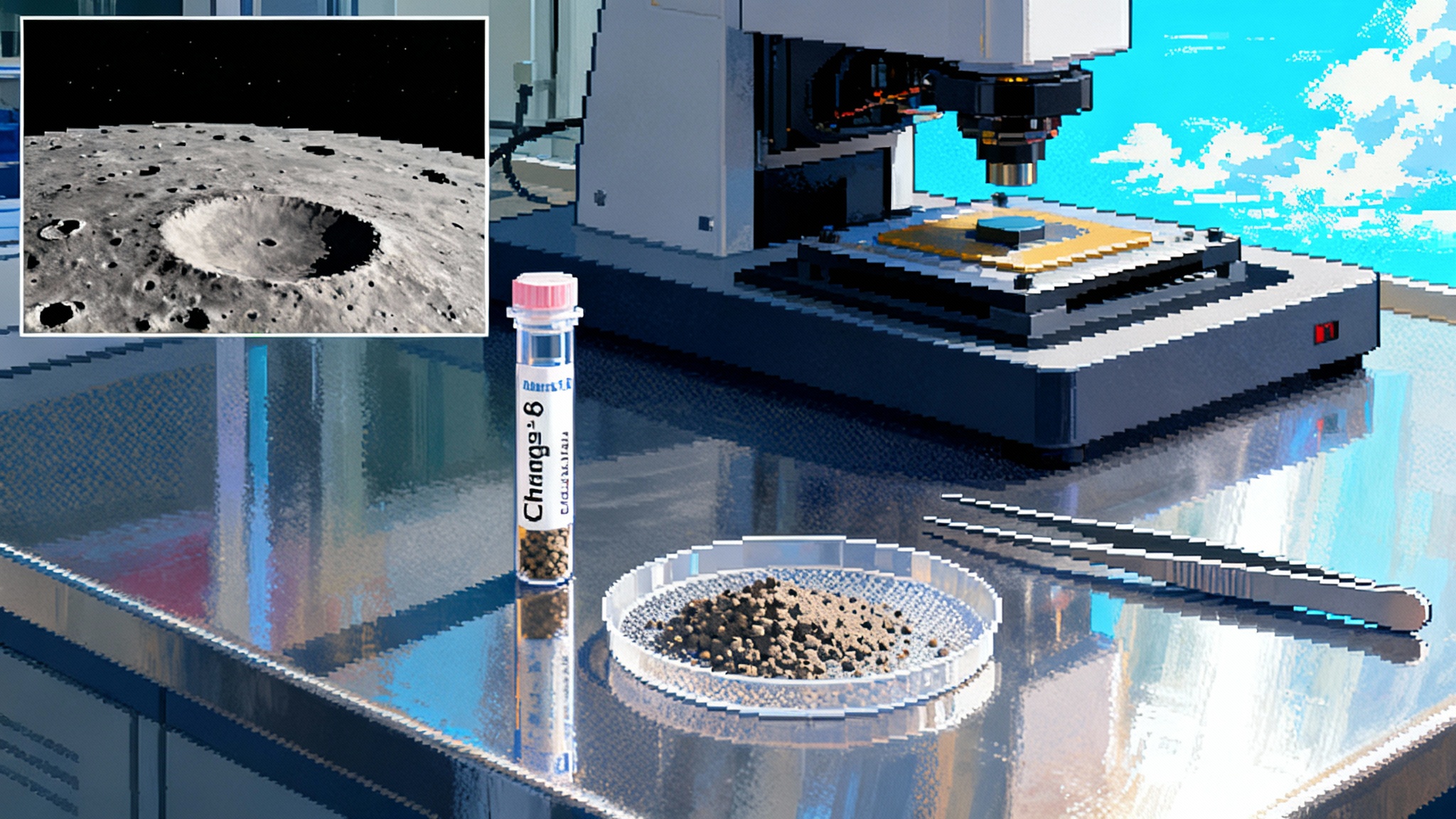Parker Probe’s 25th Flyby Sets Stage for Better Forecasts
Between Sept 15 and 20, 2025, Parker Solar Probe matched its 3.8 million mile perihelion and 430,000 mph speed records right at solar maximum. With science downlink beginning Sept 23, expect fresh near-Sun measurements that can tighten space weather forecasts for satellites, power grids, and future crews.

What just happened
Parker Solar Probe slipped through the Sun’s atmosphere again. On Sept 15, 2025, the spacecraft executed its 25th close pass, matching its 3.8 million mile perihelion and top speed of 430,000 mph. NASA flight controllers received the autonomous all-clear tone on Sept 18, and the encounter phase runs through Sept 20. Science downlink is scheduled to begin Sept 23, when Parker starts returning measurements from inside the corona. These dates are documented in NASA confirms 25th flyby.
This was not a one-off sprint. Parker has repeatedly matched its closest approach and peak speed, including passes on Dec 24, 2024, March 22, 2025, and June 19, 2025. That repeatability lets scientists compare like-for-like encounters during the peak of Solar Cycle 25.
Why solar maximum makes this special
Solar maximum is the crest of the roughly 11-year solar cycle, when sunspots multiply, magnetic fields twist, and eruptions spike. Coronal mass ejections and solar energetic particles become more frequent and intense. The 25th pass pairs Parker’s most extreme orbit with the cycle’s peak, boosting the odds of sampling CMEs and shock fronts before they evolve into the gentler flows measured near Earth.
Parker’s trajectory also grazes the region where the solar wind transitions from magnetically anchored to free flowing, often called the Alfvén critical surface. During solar maximum, that boundary ripples and shifts. Repeated sampling at record distances and speeds helps reveal how the wind is born and how turbulence shapes it.
How inside-the-corona data tightens forecasts
The practical payoff is better forecasts for satellites, power grids, aviation, and crews headed for the Moon and Mars.
-
Earlier warning of CME impacts. Near-Sun measurements of magnetic field and plasma constrain a CME’s initial orientation and strength before it rotates or distorts. If Parker samples the sheath and shock close to liftoff, forecasters can initialize models with a truer picture, improving arrival-time and geoeffective field predictions.
-
Clearer rules for shock acceleration. By capturing shock geometry, speed, and turbulence while the shock is still young, Parker refines how quickly protons and heavy ions are accelerated. That translates to more reliable probabilities for SEP watches that operators use to protect hardware and crews.
-
Better background for drag and radio forecasts. Close-in measurements of density, temperature, and magnetic variability improve baseline solar wind conditions used in satellite drag and ionospheric models.
Put simply, know the eruption earlier, understand the shock more precisely, and set the background wind correctly, and every forecast horizon sharpens from minutes to days.
What to watch in the new datasets
When the Sept 23 downlink begins, these signatures matter most.
1) Shock structures
A fast CME acts like a supersonic boat hull, generating a shock front. Parker can resolve:
- Foot, ramp, and overshoot. How quickly magnetic and plasma parameters jump determines how efficiently particles are injected.
- Shock obliquity. The angle between the shock normal and magnetic field controls which particles accelerate and how fast.
- Turbulent foreshocks. Upstream waves and reflected particles seed acceleration and shape energy spectra.
Why you care: These properties feed directly into SEP hazard estimates used to time instrument safing and spacewalks.
2) Switchbacks
Switchbacks are S-shaped magnetic kinks that briefly flip field direction.
- Distribution and size. Clustering and size hint at whether they arise from small reconnection jets or larger scale dynamics.
- Energy and turbulence. Alfvénic signatures can contribute to heating and momentum in the wind.
- Interaction with CMEs. A switchback-rich medium can precondition a shock and change acceleration efficiency.
Why you care: Better switchback statistics improve background wind models that underpin drag and radio forecasts.
3) Energetic particles
SEPs are the radiation bullets of space weather.
- Onset and rise time. Fast onsets imply strong magnetic connection to the source; slow rises suggest diffusive paths.
- Composition clues. Element ratios and charge states fingerprint source temperatures and acceleration mechanisms.
- Seed populations. Low energy seeds near the corona remove a major uncertainty in many SEP models.
Why you care: Tighter SEP models cut false alarms and missed events.
4) Remote imaging meets in situ
Parker combines in situ instruments with a heliospheric imager. Correlating visible features like streamers and CME fronts with simultaneous plasma and field data anchors the movie to the measurements, enabling event case studies that link corona structures to downstream impacts.
Satellites, power grids, and crews
-
Satellites. If arrival-time errors shrink from many hours to a few hours, operations windows widen and unnecessary safing falls. Insights near the Sun support smarter rules for high-voltage instruments during radiation spikes. In low Earth orbit, better background wind knowledge improves drag forecasts and conjunction planning. For context on operational playbooks, see how operators protect satellites in /dragon-trunk-boost-kit-iss-reboost-2025.
-
Power grids. Southward magnetic fields inside CMEs couple strongly to Earth’s magnetosphere and drive ground currents. Better estimates of that southward component days earlier help utilities stage reactive power and adjust transformer loading.
-
Crewed and deep-space missions. Reliable SEP alerts and storm-duration confidence are critical. A few extra hours of lead time can decide whether to finish an EVA or shelter. See missions bound for Mars in /new-glenn-escapade-mars-preview-analysis, and a case study in rapid forecasting in /planetary-defense-goes-live-2025-fa22-case-study.
All of this sits in the shadow of the May 2024 event, a storm that drove widespread auroras and industry alerts. For a recap, see how NOAA detailed the May 2024 G5 storm with multiple Earth-directed CMEs.
What happens next through 2026
NASA has stated that mission steps for 2026 and beyond are under review. Two science-focused paths matter most:
- Maintain the current orbit for more record-distance passes as activity declines, isolating how the corona changes from peak toward the down slope of Solar Cycle 25.
- Prioritize targeted campaigns when major active regions rotate into view, tuning modes and downlink to maximize early-phase coverage of eruptive sequences.
Key questions for 2026: Does the Alfvén critical surface retreat as activity cools, and by how much. Do CMEs shift toward slower, wider events with different risk profiles. Does the energetic particle environment quiet in ways that test whether new acceleration rules transfer from extreme to moderate conditions.
How to read the early returns
Expect quick-look health checks and preliminary plots after Sept 23. Deeper analysis usually arrives weeks to months later: event catalogs first, then correlations that map switchbacks and shocks to imaging, followed by model assimilation that turns measurements into forecasts. Watch for:
- Narrower CME launch parameters that reduce arrival-time spreads.
- Updated particle acceleration fits that cut false-alarm rates for SEP watches.
- Clearer mapping from corona structures to downstream magnetic orientation, which matters most for grid operators.
The bigger story
At heart, Parker is a simple bet: if you want to understand storms, measure them where they start. The 25th flyby kept that bet alive at the crest of Solar Cycle 25, when industrial satellite fleets, tight-margin power systems, and human exploration need more certainty. Sept 15 to 20 is not just another pass. It is a repeatable record at the cycle’s crest designed to strip away guesswork. When the Sept 23 downlink begins and the first plots of shocks, switchbacks, and particles arrive, the community can start turning raw numbers into better forecasts.
For now, Parker has done its part. It skimmed the Sun’s atmosphere, matched its speed and distance records, and stayed healthy. The rest is analysis and modeling. The payoff is unlikely to be one blockbuster result, but many small corrections that add up to forecasts that are on time, on target, and trusted.








